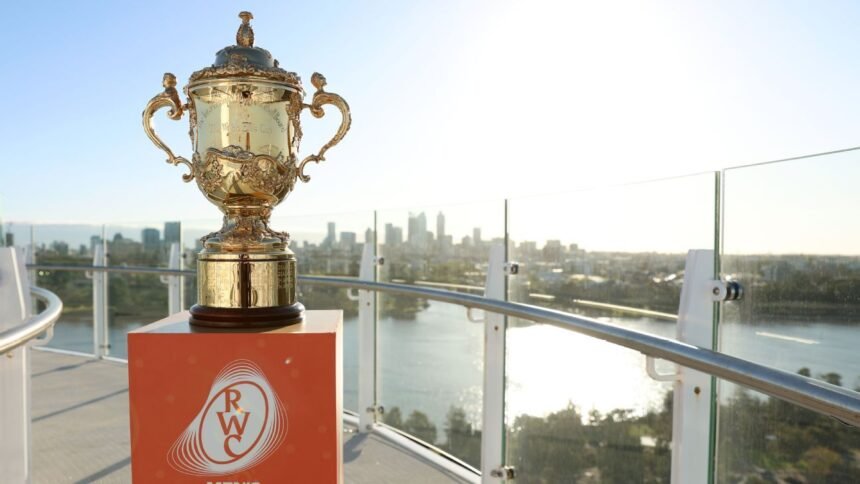The 2027 Men’s Rugby World Cup has officially concluded its two-year countdown, with 24 teams set to compete in the biggest tournament in the history of the sport, with the draw scheduled for Wednesday 3 December.
Australia will host the tournament, with the opening match being played at Perth’s Optus Stadium on October 1, marking the beginning of a new era for the men’s game. However, expanding from 20 to 24 teams means opening the door to an entirely new tournament format, including the introduction of a “Round of 16.”
So how does it work?
What is the new tournament format?
Previously, the tournament consisted of 20 teams and four pools, but the 2027 World Cup will be expanded to six pools of four teams. The top two teams from each pool advance to the Round of 16, with the top four teams in third place also advancing.
The final four teams will be determined by competition points, with point difference and try difference taken into account as appropriate.
Will there be more matches at the World Cup?
The introduction of Round of 16 will give fans more games to enjoy, but in an interesting twist, players won’t be playing any additional games. So how does it work?
Reducing the number of teams participating in each pool from five to four means each team will have one fewer match in the pool stage (no more bye rounds) and will be replaced by an additional knockout match, expanding the tournament from 48 in 2023 to 52 in 2027. Meanwhile, there will be at least five rest days between matches.
This also means that the tournament will be condensed, going from 50 days in 2023 to just 43 days in 2027.
How is the Round of 16 played?
It gets a little complicated from here, but I’ll keep it simple.
The winner of Pool AD will play the top four teams in third place, and the winners of Pools E and F will play the second place teams in Pools D and B. The second place teams from Pools A and C will play the second place teams from Pools E and F.
While this may seem unfair on the surface, the disparity is evened out in the next knockout round. For example, the winner of Pool A will play the third-place team in the Round of 16, but if that team advances, they may play the winner of Pool B. Meanwhile, the winner of Pool E will play the second-seeded team in both finals.
When and where is the World Cup draw held?
The draw to decide the pool stages will take place in Sydney on Wednesday 3 December.
How is the lottery conducted?
Once all 24 teams have been confirmed, they will be seeded from 1 to 24 based on the World Rugby Rankings at the time of the December 3rd draw.
The 24 teams are divided into four groups of six labeled bands. The top 6 countries are grouped into Band 1, the next 6 countries into Band 2, and so on. Each pool will have one team from each of the four bands.
There is one exception. Australia is already placed in Pool A as they are hosting the tournament. The Wallabies currently sit outside the top six and are currently in band two. This means that teams in Band 1 will be drawn and placed in Pool A. However, if the world ranking increases by December, a band 2 team will be drawn instead.
Which teams qualified?
The 12 teams from France, New Zealand, Italy, Ireland, South Africa, Scotland, Wales, Fiji, Australia, England, Argentina and Japan automatically qualify for the 2023 World Cup if they finish in the top three of their pool.
The remaining 12 spots are reserved for teams who qualify through qualifying tournaments, including Georgia, Spain, Romania, Portugal, Tonga, Canada, United States, Uruguay, Chile, Zimbabwe and Hong Kong, China.
With one last spot remaining, Namibia, Belgium, Samoa, Brazil and Paraguay will fight for a spot in October.
What is the current seed?
Band 1: South Africa, New Zealand, Ireland, France, England, Argentina
Band 2: Australia, Scotland, Fiji, Italy, Georgia, Wales
Band 3: Japan, Spain, America, Chile, Tonga, Uruguay
Band 4: Portugal, Romania, Hong Kong China, Canada, Zimbabwe
Where will the game be played?
The biggest World Cup to date will be held in the world’s largest island nation, with matches taking place in seven different locations around the country, including Sydney, Adelaide, Perth, Brisbane, Melbourne, Newcastle and Townsville.


